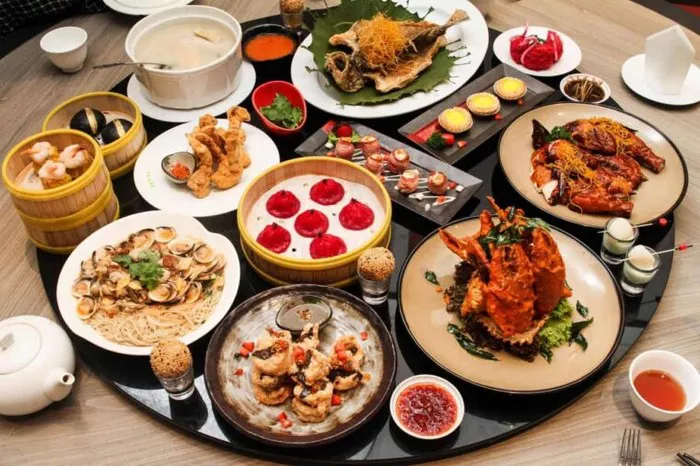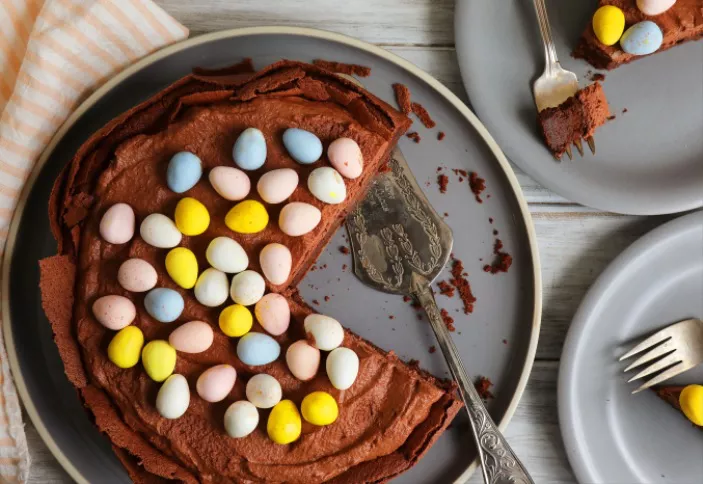As spring blooms and Easter approaches, families and friends gather around tables adorned with colorful decorations and delectable dishes. Among the cherished traditions of this joyous occasion is the Easter dinner, a feast that varies in content and style across different cultures and households. From succulent roasts to vibrant spring vegetables, the Easter dinner is a celebration of renewal, abundance, and togetherness. In this article, we delve into the elements that constitute a popular Easter dinner, exploring the diverse culinary traditions that have shaped this festive meal.
A Feast of Abundance: Traditional Easter Fare
At the heart of many Easter dinners lies a sumptuous centerpiece, often a roast or a baked ham. Roast lamb, symbolizing the sacrifice of Christ in Christian tradition, holds a special place on many Easter tables, especially in Mediterranean and Middle Eastern cuisines. The tender meat, seasoned with aromatic herbs and spices, evokes a sense of reverence and celebration.
For those who prefer pork, glazed ham takes the spotlight, its sweet and savory flavors embodying the spirit of indulgence that characterizes Easter feasts. Glazed with honey, brown sugar, or fruit preserves, the ham becomes a tantalizing treat, complemented by sides ranging from scalloped potatoes to roasted carrots.
Spring’s Bounty: Seasonal Vegetables and Fresh Flavors
Accompanying the main course are an array of vibrant vegetables, heralding the arrival of spring’s bounty. Asparagus spears, tender and green, grace the table, perhaps drizzled with lemon butter or roasted to perfection. Peas, freshly harvested, add a pop of color and sweetness to dishes like risottos or salads.
Easter is also synonymous with eggs, symbolizing fertility and new life. Deviled eggs, adorned with creamy fillings and garnishes, make for irresistible appetizers, while Easter egg hunts add an element of fun and anticipation to the festivities.
Bread of Life: Easter Breads and Baked Goods
No Easter dinner is complete without an assortment of bread and baked goods, each carrying its own symbolic significance. Hot cross buns, spiced with cinnamon and studded with raisins, harken back to ancient traditions, their cross-marked tops representing the crucifixion of Jesus Christ. Slices of braided Easter bread, enriched with eggs and butter, symbolize abundance and unity, shared among loved ones in a spirit of generosity.
For those with a sweet tooth, Easter desserts abound, from rich chocolate cakes to delicate pastries. A centerpiece of many Easter tables, the Easter lamb cake, molded in the shape of a lamb and adorned with frosting and coconut, serves as a sweet homage to the paschal lamb of Christian symbolism.
Cultural Traditions: Regional Variations on Easter Dinner
Across the globe, Easter dinners reflect the rich tapestry of cultural traditions and culinary heritage. In Italy, the Easter meal, known as “La Pasqua,” may feature dishes like “agnello al forno” (oven-roasted lamb) and “colomba di Pasqua” (Easter dove cake), a sweet bread similar to panettone. In Greece, “Magiritsa,” a traditional soup made with lamb offal and herbs, is enjoyed after midnight Mass on Easter Saturday, followed by a feast of roasted lamb and “tsoureki,” a braided sweet bread.
In the United States, Easter dinners vary by region and family tradition. Southern cuisine often includes classics like fried chicken, biscuits, and collard greens alongside glazed ham and deviled eggs. In the Midwest, dishes like scalloped potatoes and green bean casserole may take center stage, while on the East Coast, seafood specialties like baked salmon or shrimp scampi are popular choices for Easter Sunday.
Modern Twists: Contemporary Takes on Easter Dinner
While many cherish the time-honored traditions of Easter dinner, others embrace innovation and experimentation in the kitchen. Vegetarian and vegan options, such as roasted vegetable Wellington or stuffed portobello mushrooms, offer flavorful alternatives to meat-centric dishes. Quinoa salads, avocado toast, and other trendy fare reflect changing tastes and dietary preferences, inviting a new generation to partake in the Easter feast.
In recent years, multicultural fusion has also influenced Easter menus, with chefs drawing inspiration from diverse culinary traditions to create unique and eclectic dishes. Korean-inspired deviled eggs, Mediterranean-style lamb kebabs, and Latin American empanadas are just a few examples of the creative and inclusive spirit that infuses modern Easter celebrations.
Conclusion
As Easter approaches, the anticipation of gathering with loved ones and sharing a bountiful meal fills the air with excitement and joy. Whether steeped in tradition or embracing innovation, Easter dinner serves as a cherished ritual that brings people together, fostering a sense of community and connection that transcends cultural and culinary boundaries. As we savor each delicious bite and raise our glasses in celebration, let us remember the true essence of Easter—the spirit of renewal, rebirth, and everlasting hope.


























